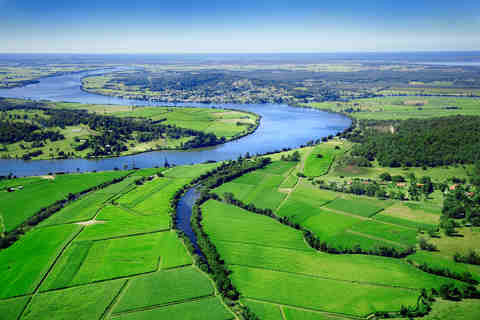Hydrology & Atmosphere
Hydrology
Hydrology is the scientific study of the movement, distribution, and quality of water on Earth and other planets, including the
hydrologic cycle, water resources and environmental watershed sustainability.

Hydrology is subdivided into surface water hydrology, groundwater hydrology (hydrogeology), and marine hydrology. Domains of hydrology include
drainage basin management and water quality, where water plays the central role.

The Hydro-logical Cycle
he sun's heat provides energy to evaporate water from the earth's surface (oceans, lakes, etc.). Plants also lose water to the air - this is called transpiration. The water vapour eventually condenses, forming tiny droplets in clouds.
Some of the underground water is trapped between rock or clay layers - this is called groundwater. But most of the water flows downhill as runoff (above ground or underground), eventually returning to the seas as slightly salty water.
ATMOSPHERE
Atmosphere is a layer of gases surrounding a planet or other material body of sufficient mass that is held in place by the gravity of the body. An atmosphere is more likely to be retained if the gravity is high and the atmosphere's temperature is low.
The atmosphere is a mixture of nitrogen (78%), oxygen (21%), and other gases (1%) that surrounds Earth. High above the planet, the atmosphere becomes thinner until it gradually reaches space. It is divided into five layers. Most of the weather and clouds are found in the first layer.
Earth's Atmosphere

Title Text
Lorem ipsum dolor sit amet, consectetur adipiscing elit. Proin urna odio, aliquam vulputate faucibus id, elementum lobortis felis. Mauris urna dolor, placerat ac sagittis quis.
Title Text
Lorem ipsum dolor sit amet, consectetur adipiscing elit. Proin urna odio, aliquam vulputate faucibus id, elementum lobortis felis. Mauris urna dolor, placerat ac sagittis quis.
Copy of Title TextTitle Text
By fatimacadiente
Copy of Title TextTitle Text
- 665
